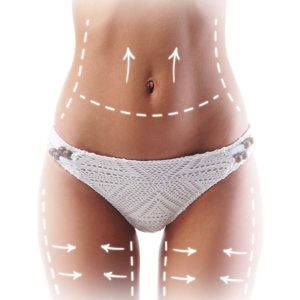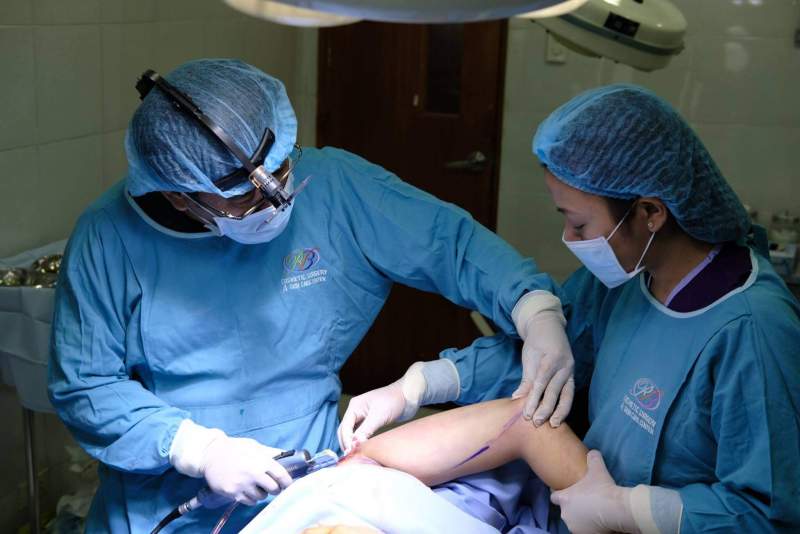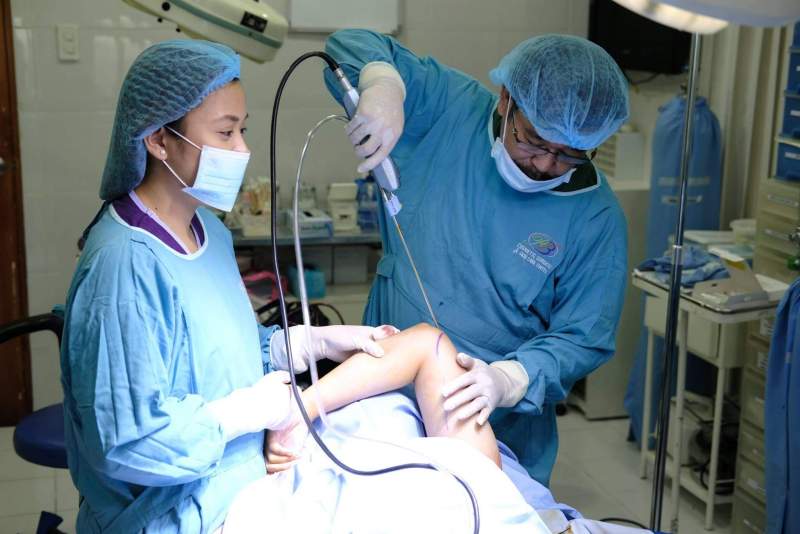Liposuction in the Philippines

What is Liposuction?
A cosmetic or dermatologic surgeon usually does the procedure on your hips, belly, thighs, buttocks, back, arms, or face to improve their shape. But liposuction can also be done with other plastic surgeries, including facelifts, breast reductions, and tummy tucks.
Benefits of Liposuction
Long-lasting results
In the desire of shedding off excess fat, patients take up measures such as changing diet and exercise. However, these techniques alone may fail to fully remove these pockets of fat, but with liposuction, the outcome is more satisfactory and long-lasting. Here, the patient’s body maintains a firm and smooth look with no room for fat tissue.
Enhances physical appearance
Patients get to enjoy a better and sexier look overall. By shedding unwanted body fat from regions such as the neck, thighs, hips, chest, buttocks, abdomen and back, you get to rejuvenate your body physique.
Boosts confidence
When patients are comfortable with their body, their self-confidence is gradually restored. Additionally, patients are more energized and enthusiastic about life.
Candidates for Liposuction
- Adults within 30% of their ideal weight who have firm, elastic skin and good muscle tone
- Healthy individuals who do not have a life-threatening illness or medical conditions that can impair healing
- Nonsmokers
- Individuals with a positive outlook and specific goals in mind for body contouring
If you are bothered by excess fat deposits located anywhere on your body that don’t respond to diet or exercise, liposuction may be right for you.
Consultation
- Your surgical goals
- Medical conditions, drug allergies and medical treatments
- Current medications, vitamins, herbal supplements, alcohol, tobacco and drug use
- Previous surgeries
Your liposuction surgeon will also:
- Evaluate your general health status and any pre-existing health conditions or risk factors
- Take photographs
- Discuss your liposuction options
- Recommend a course of treatment
- Discuss likely outcomes of liposuction and any risks or potential complications
The consultation is the time to ask your surgeon questions.
It’s very important to understand all aspects of your liposuction procedure. It’s natural to feel some anxiety, whether it’s excitement for your anticipated new look or a bit of preoperative stress. Don’t be shy about discussing these feelings with your cosmetic surgeon.
The first step is to consult with your surgeon. Talk about your goals, the options, the risks and benefits, and the costs. Ask all your questions.
If you decide to go ahead with liposuction, your surgeon will give you instructions on how to prepare for it. These may include diet and alcohol restrictions.
Tell your surgeon about any allergies you have and any medications you take, including over-the-counter and herbal supplements. She will likely recommend you stop taking certain meds, such as blood thinners and certain painkillers several weeks before surgery.
Risks and Safety
You will be asked to sign consent forms to ensure that you fully understand the procedure and any risks and potential complications.
Liposuction risks include:
- Anesthesia risks
- Bruising
- Change in skin sensation that may persist
- Damage to deeper structures such as nerves, blood vessels, muscles, lungs and abdominal organs
- Deep vein thrombosis, cardiac and pulmonary complications
- Fluid accumulation
- Infection
- Irregular contours or asymmetries
- Irregular pigmentation
- Need for revision surgery
- Persistent swelling
- Poor wound healing
- Rippling or loose skin, worsening of cellulite
- Swelling
- Thermal burn or heat injury from ultrasound with the ultrasound-assisted lipoplasty technique
These risks and others will be fully discussed prior to your consent. It is important that you address all your questions directly with your surgeon.
Secondary procedures may sometimes be recommended to reduce excess skin. Special considerations are needed when large amounts—usually more than five liters of fat—are suctioned.
Preparation
- Get lab testing or a medical evaluation
- Take certain medications or adjust your current medications
- Stop smoking
- Avoid taking aspirin, anti-inflammatory drugs and herbal supplements as they can increase bleeding
Liposuction should be performed in an accredited office-based surgical facility, licensed ambulatory surgical center or a hospital.
Be sure to arrange for someone to drive you to and from surgery and to stay with you for at least the first night following surgery.
Your liposuction may take place at your doctor’s office or a surgery center. Make sure that the place where you’re getting it done is accredited, and is known for its professional standards, safety and good results.
You’ll go home the day of the procedure. Make sure to have someone drive you home afterward. (If you’re having a lot of fat removed, you should get the surgery done in a hospital, where you might stay overnight).
Before your liposuction starts, your doctor might mark the areas of your body that will be treated. She may also take photos to use later for before-and-after comparisons. Next you’ll get general anesthesia — which means you will not be awake during the procedure — or a “local,” which means you will be awake but not feel any pain.
Procedure
Types of Liposuction
There are just a few different liposuction techniques. But what they all have in common is the use of a thin tube, called a cannula, connected to a vacuum to suction the fat from your body.
Tumescent liposuction is the most common technique. Your surgeon injects a sterile solution into the area where the fat is to be removed. It consists of saline — which is salt water – along with lidocaine and epinephrine
Ultrasound-assisted liposuction, or UAL, uses sound waves energy under your skin to rupture the cell walls of the fat. This liquefies the fat so it can be suctioned out.
Power assisted liposuction is performed using a special cannula which uses tiny, rapid vibrations to break up fat cells so that they can be suctioned out of the body. Doctors can remove more fat in a shorter period of time, which leads to enhanced results, a safer procedure, and faster recovery. PAL is performed using the tumescent liposuction technique, in which an anesthetic liquid is injected into the treatment area for smooth fat transfer through the cannula and out of the body.
Laser-assisted liposuction, or SmartLipo, uses a laser to produce a burst of energy to liquefy the fat.
The liposuction procedure includes the following steps:
Step 1- Anesthesia
Medications are administered for your comfort during the surgical procedure. The choices include local anesthesia, intravenous sedation and general anesthesia. Your doctor will recommend the best choice for you.
Step 2 – Incision
Liposuction is performed through small, inconspicuous incisions.
First, diluted local anesthesia is infused to reduce bleeding and trauma. Then a thin hollow tube, or cannula, is inserted through the incisions to loosen excess fat using a controlled back and forth motion. The dislodged fat is then suctioned out of the body using a surgical vacuum or syringe attached to the cannula.
Recovery
In addition, small temporary drains may be placed in existing incisions beneath the skin to remove any excess blood or fluid.
You will be given specific instructions that may include:
- How to care for the surgical site and drains
- Medications to apply or take orally to aid healing and reduce the potential for infection
- Specific concerns to look for at the surgical site or in your general health
- When to follow up with your plastic surgeon
Be sure to ask your plastic surgeon specific questions about what you can expect during your individual recovery period:
- Where will I be taken after my surgery is complete?
- What medication will I be given or prescribed after surgery?
- Will I have dressings/bandages after surgery?
- How long will I wear the compression garment?
- Are stitches removed? When?
- When can I resume normal activity and exercise?
- When do I return for follow-up care?
It may take several months for the swelling to fully dissipate. As it does, your new contours and enhanced self-image should continue to develop.
How long is the recovery?
You might not have to stay in the hospital depending on the type of surgery you had. But you should expect bruising, swelling, and soreness for at least a few weeks.
Your surgeon may require you to wear a compression garment for 1 to 2 months after surgery to control swelling.
You’ll probably also have to take some antibiotics to prevent infection. Most people can return to work within a few days and get back to normal activities within 2 weeks. But every person is different.
Results
What to Expect in Liposuction
The fat cells are removed permanently during liposuction. But you can gain weight back, with new fat cells, which usually go to different areas of your body.
To keep your new shape after surgery, follow a diet that includes lots of lean protein, fruits and vegetables, whole grains, and low-fat dairy. And exercise regularly.



